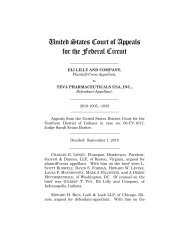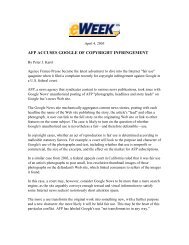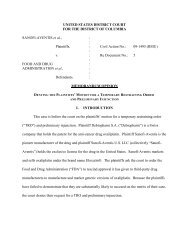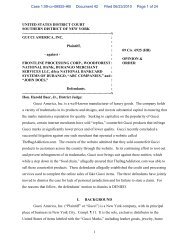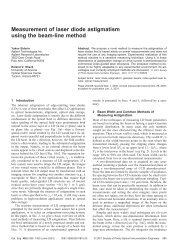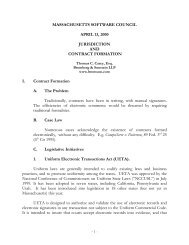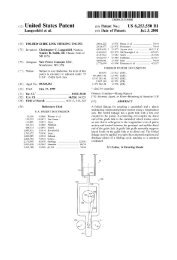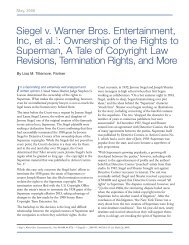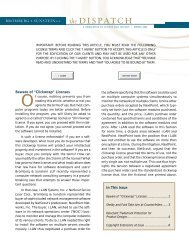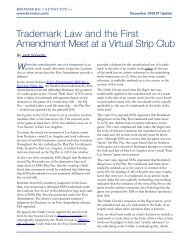The Evolving IP Marketplace: Aligning Patent Notice and Remedies ...
The Evolving IP Marketplace: Aligning Patent Notice and Remedies ...
The Evolving IP Marketplace: Aligning Patent Notice and Remedies ...
- No tags were found...
You also want an ePaper? Increase the reach of your titles
YUMPU automatically turns print PDFs into web optimized ePapers that Google loves.
ecause they occur before the purchaser has obtained the technology through other means. Suchex ante patent transactions accompanied by technology transfer are an important means foradvancing innovation, creating wealth, <strong>and</strong> increasing competition among technologies.CHAPTER 2THE EVOLVING PATENT MARKETPLACE: EX POST PATENT TRANSACTIONSWhile the open innovation model <strong>and</strong> technology transfer are important pathways toinnovation, not all patent licensing <strong>and</strong> sales occur ex ante as part of a technology transferagreement. In many cases, the licensee or purchaser already uses the patented technology whenapproached by the patent owner, but it lacks a license to use the technology. <strong>The</strong>se patenttransactions occur ex post, after the firm accused of infringement has invested in creating,developing or commercializing the technology. <strong>The</strong> firm needs the ex post license to avoidliability, even if it invented or obtained the technology independent of the patentee, becausepatent infringement is a strict liability offense.<strong>The</strong> ability of patentees to assert their patents against infringers is important to the patentsystem’s role in promoting innovation <strong>and</strong> facilitating technology transfer. <strong>The</strong> threat of a patentinfringement suit deters infringement <strong>and</strong> safeguards the exclusivity that is the heart of the patentsystem. A business model based on invention followed by technology transfer will only succeedif a firm can prevent copying <strong>and</strong> recoup its investment in R&D.But ex post licensing to manufacturers that sell products developed or obtainedindependently of the patentee can distort competition in technology markets <strong>and</strong> deterinnovation. <strong>The</strong> failure of the patentee <strong>and</strong> manufacturer to license ex ante with technologytransfer results in duplicated R&D effort. When a manufacturer chooses technology for aproduct design without knowledge of a later-asserted patent, it makes that choice withoutimportant cost information, which deprives consumers of the benefits of competition in thetechnology market. If the manufacturer has sunk costs into using the technology, the patenteecan use that investment as negotiating leverage for a higher royalty than the patented technologycould have comm<strong>and</strong>ed ex ante, when competing with alternatives. <strong>The</strong> increased uncertainty<strong>and</strong> higher costs associated with ex post licensing can deter innovation by manufacturers.Increasing activity by patent assertion entities (PAEs) in the information technology (IT)5industry has amplified concerns about the effects of ex post patent transactions on innovation <strong>and</strong>competition. <strong>The</strong> business model of PAEs focuses on purchasing <strong>and</strong> asserting patents againstmanufacturers already using the technology, rather than developing <strong>and</strong> transferring technology.5This report uses the term “patent assertion entity” rather than the more common “non-practicing entity”(NPE) to refer to firms whose business model primarily focuses on purchasing <strong>and</strong> asserting patents.Taken literally, the term NPE encompasses patent owners that primarily seek to develop <strong>and</strong> transfertechnology, such as universities <strong>and</strong> semiconductor design houses. <strong>Patent</strong> assertion entities do notinclude this latter group.8



